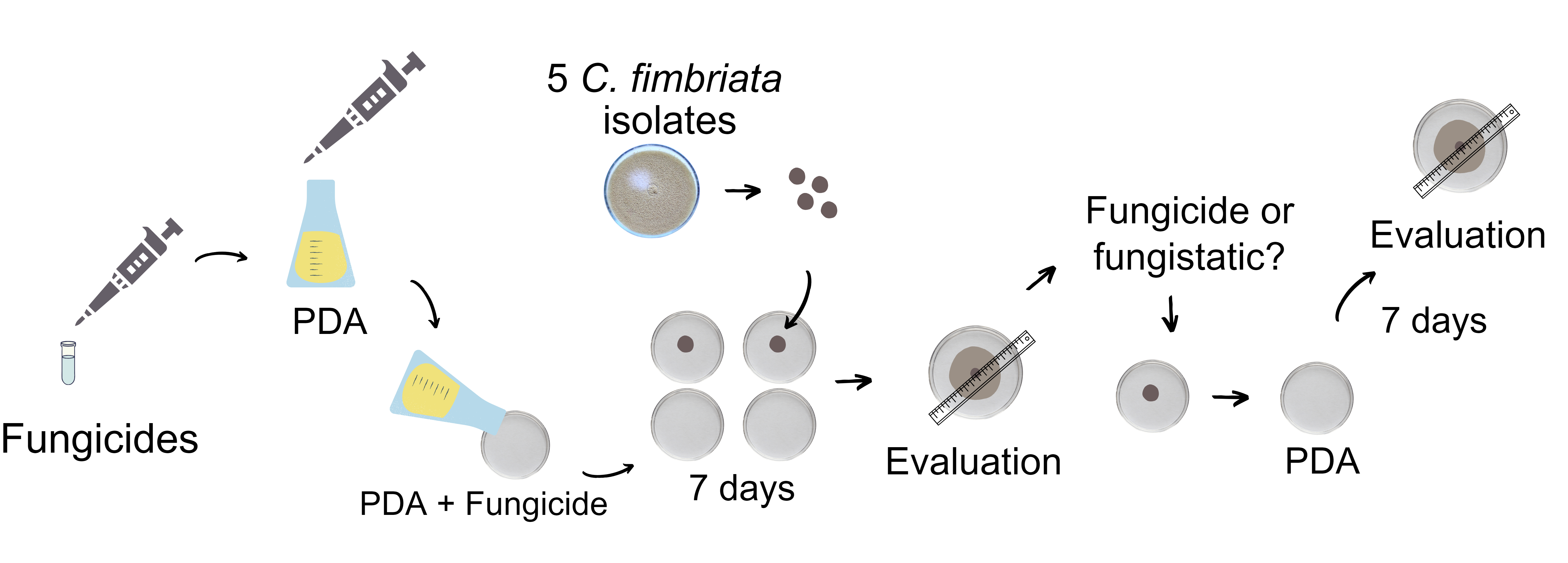In vitro mycelial growth
The efficacy of four commercial fungicides, metalaxyl 4% + mancozeb 64% (Ridomil Gold MZ®), boscalide 20% + cresoxim-methyl 10% (Collis®), pyraclostrobin 25% (Comet®) and copper hydroxide 69.1% (Tutor®), was evaluated against mycelial growth of five Ceratocystis fimbriata kiwifruit isolates (LPF1443, 1673, 1688, 1697 and 1701), from diferent geographic regions (Figure below).
Final fungicide concentrations of 0 (control), 50, 100, 500, and 1000 μg a.i. mL-1 were used. Commercial products were suspended in autoclaved distilled water to obtain stock solutions (2000 μg a.i. mL) and the appropriate volume was added to PDA, to obtain the different concentrations. The C. fimbriata isolates were grown in PDA medium, at 28◦C and 12 h photoperiod, for twelve days. After incubation, mycelial plugs (6 mm diameter) were taken from the margin of the colonies, for each C. fimbriata isolate and placed in the center of Petri dishes (60 mm diameter) containing PDA amended with the fungicides. Mycelial growth was evaluated after approximately seven days of incubation, at 25 ºC and 12 h photoperiod, until one of the colonies reached the border of the plate. The colony diameter was measured in two perpendicular directions and the mycelial growth was calculated, as shown in the figure below. 
For each treatment (C. fimbriata isolate × fungicide × dose), four replicates (plates) were used, and the experiment was repeated once. Additionally, for those fungicides that inhibited 100% the mycelial growth, the fungistatic or fungicide effect was evaluated by transferring the mycelial plugs to a new plate, containing PDA, and incubated at 25 ºC and 12 h photoperiod for seven days. After incubation, the mycelial growth was evaluated, and for the isolates that did not grow in pure PDA, a fungicidal effect was considered and for the isolates that grew the effect was fungistatic.